My research: GMC disruption

Young massive stars are thought to destroy their maternal molecular clouds vis their ionising radiation, winds and supernova explosions. This in turn is thought to terminate star formation in the clouds while the fraction of gas which has been converted to stars is still small, perhaps a few percent.
I recently set out to study this process using a set of model turbulent clouds, half of which were gravitationally-bound, and half of which were so turbulent that they were already globally unbound. Below are images of model clouds, bound on the left, unbound on the right. Each is shown at a time when just a few massive stars have formed, so that I could enable feedback and see how the evolution of the clouds changed at later times.
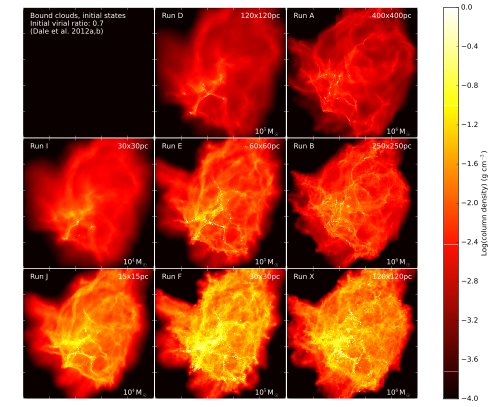
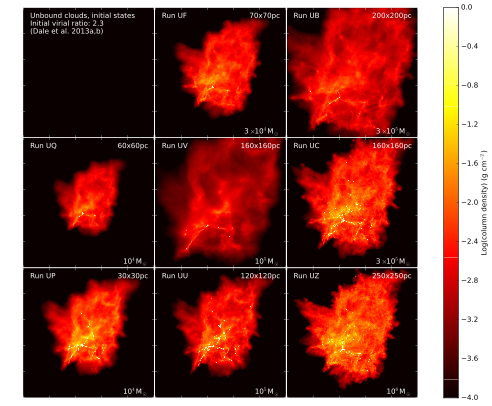
About three million years later, the effects of ionisation and stellar winds on some clouds are dramatic and on some are almost negligible:
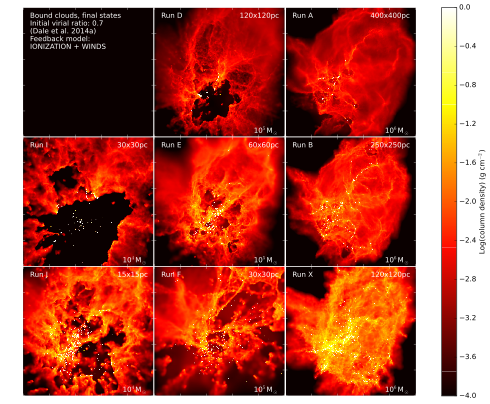
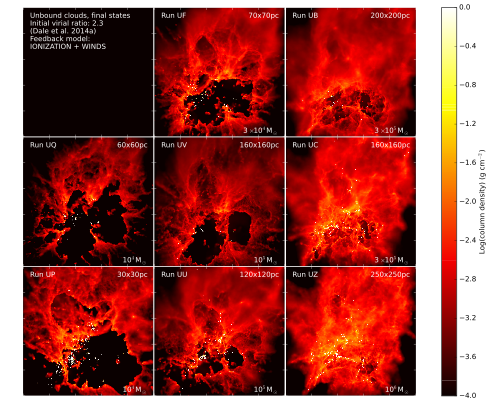
I also tested to see which of the two feedback mechanisms (ionisation and winds) had done the most damage. In the movie below, the top left panel shows a cloud evolving with no feedback at all. The top right panel shows the influence of photoionisation acting alone, the bottom left panel shows winds acting alone, and the bottom right panel shows the combined effects of winds and photoionisation.
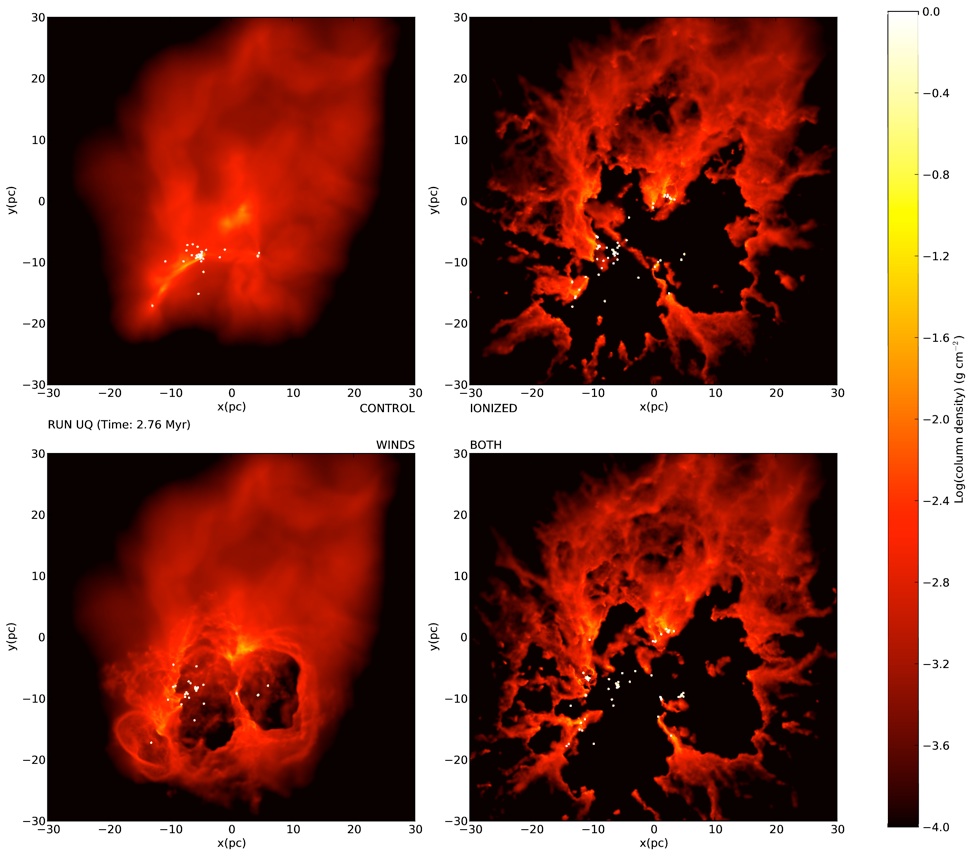
Click to see animation (32Mb Quicktime movie): uqcl_all.mov
Winds acting alone clearly do substantially less damage than photoionisation acting alone, and the combined action of the two different kinds of feedback is not very different from the effects of photoionisation acting by itself. Full details can be found in Dale et al 2014 (ADS).
One interesting thing that winds do achieve is that they blow large and distinctive holes in the bubbles of ionised gas filling the cloud interiors, as shown in the movie below. The top three panels are from a simulation including winds, and the bottom three from the same simulation without winds. The left panels show the cold gas, as before, whereas the right panels how only the hot ionised gas and the centre panels the two gas species overlaid on each other.
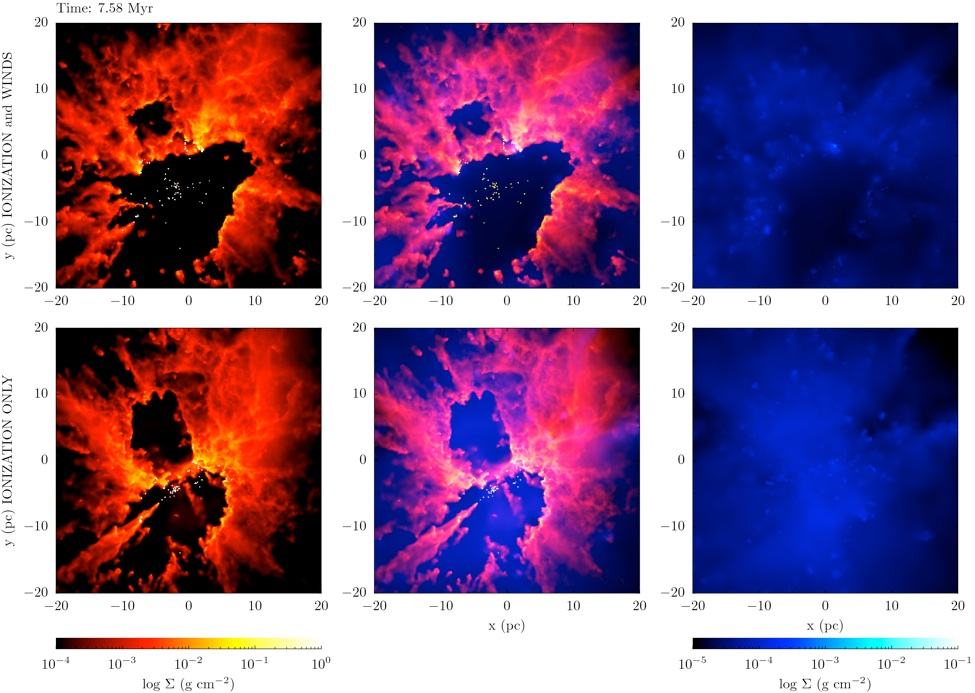
Click to see animation (46Mb Quicktime movie): run_i_both.mov
The action of feedback enables clusters to become visible for the first time by clearing away the enshrouding gas and dust. This is shown in the movie below. The left two panels are from a run without feedback where the star cluster remains buried inside its natal cloud, while the right panels show the same simulation with feedback enabled. The bottom images show the stars overplotted in front of the gas as though they wherever they are. The top panels, however, show the stars dimmed by the gas between each star and the observer. We see that the stars in the run without feedback remain buried in dense filaments of gas and thus almost invisible, while feedback allows the cluster to emerge from the cloud and become visible.
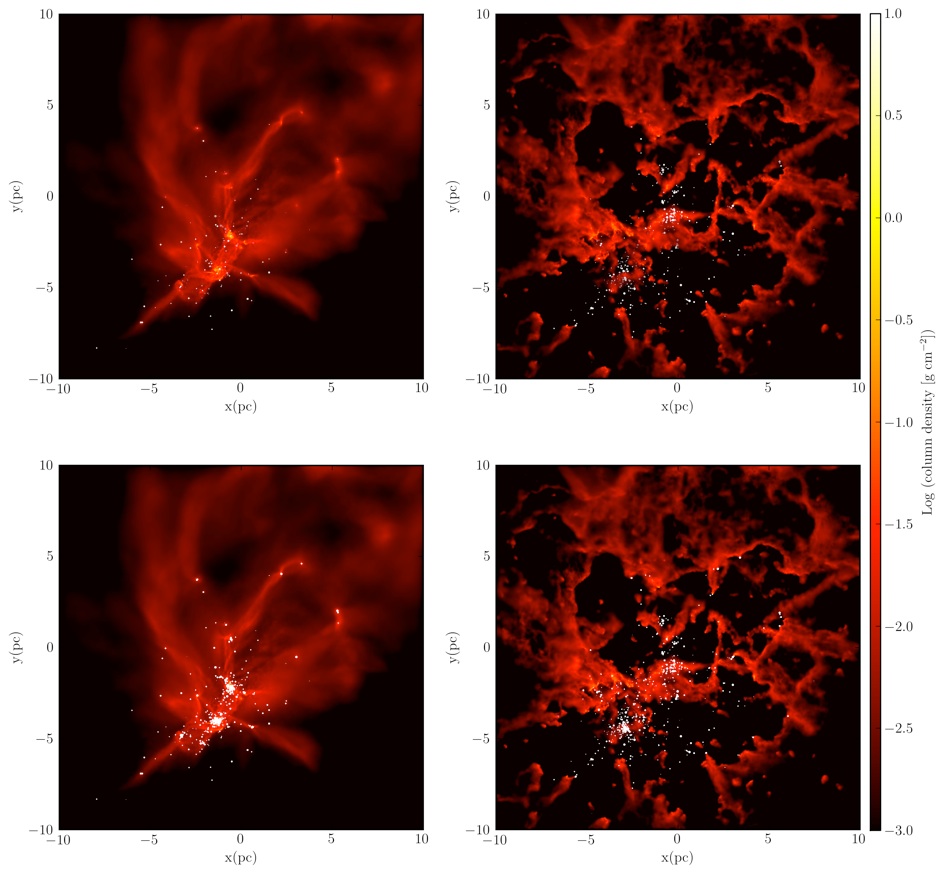
Click to see animation (33Mb mpeg4 movie): r15m_extinction.mp4
